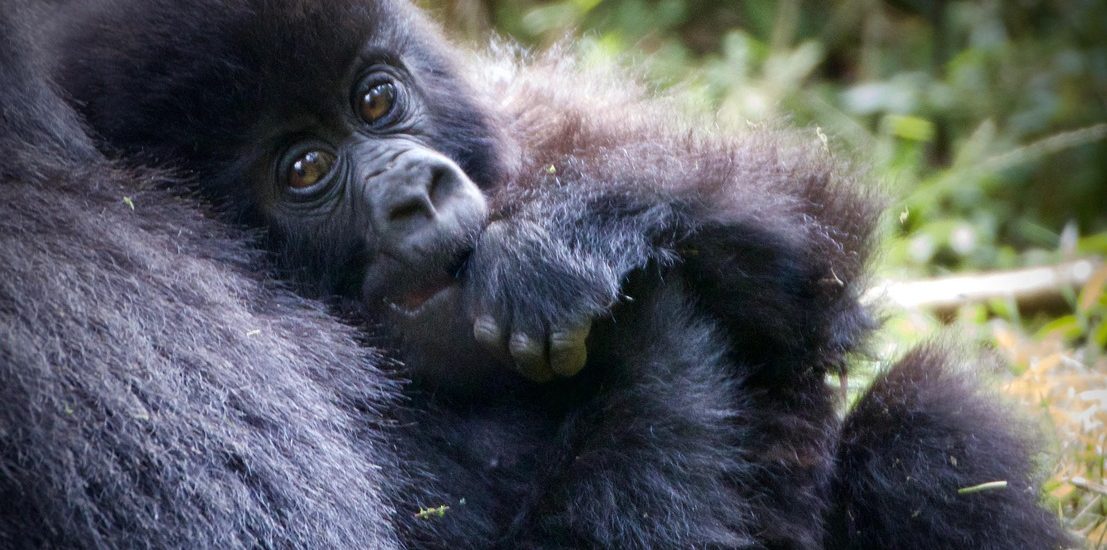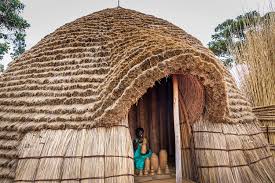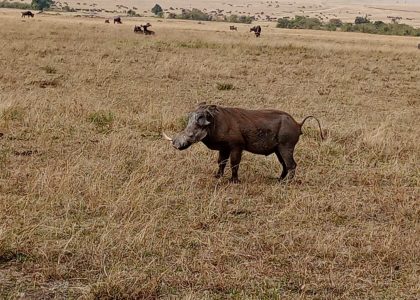In the second article of our Wazimba Travel Rwanda series, we’re talking about mountain gorillas. The mountain gorilla experience has converted many a skeptical traveler into lifelong conservation advocates and casual wildlife enthusiasts into absolute fanatics.
Here’s the truth about gorilla trekking in Rwanda: no amount of David Attenborough documentaries or National Geographic photos can prepare you for the moment you find yourself six feet away from a 400-pound silverback mountain gorilla, watching him calmly munch bamboo while his family plays around him like oversized, incredibly gentle children. As your local tour operator, we’ve guided hundreds of people through this experience, and we still get goosebumps every single time.
Why Rwanda for Gorillas?
Sure, you can trek gorillas in Uganda and the Democratic Republic of Congo too, but Rwanda offers something the others can’t match—reliability, safety, and an experience so well-organized it feels almost magical. The Rwandan government has made gorilla tourism their flagship conservation program, and it shows in every detail.
The Permit Situation: Rwanda’s gorilla permits cost $1,500 per person—significantly more than Uganda’s $800 permits. But here’s what that extra money gets you: guaranteed professionalism, better infrastructure, more reliable weather conditions, and the knowledge that your money is directly funding conservation efforts that are actually working.
Volcanoes National Park: Rwanda’s gorillas live in Volcanoes National Park, part of the greater Virunga ecosystem that stretches across three countries. The Rwandan section offers the most accessible gorilla trekking, with well-maintained trails, excellent guides, and the shortest average trek duration.
The Dian Fossey Connection: This is where the magic really happened. Dian Fossey conducted her groundbreaking research here, and her legacy permeates every aspect of the gorilla experience. You’re not just seeing gorillas—you’re participating in one of conservation’s greatest success stories.
The Gorilla Families of Volcanoes National Park
Volcanoes National Park is home to 12 habituated gorilla groups, each with its own personality, family dynamics, and territory. As of our latest count, over 400 mountain gorillas live in the Virunga ecosystem, with Rwanda hosting a significant portion of this critically endangered population.
Susa Group: Made famous by Dian Fossey, this group is one of the largest and most active. Known for their playful juveniles and the famous silverback Guhonda (though he’s getting on in years), Susa offers some of the most dynamic gorilla encounters.
Karisimbi Group: Living on the slopes of Mount Karisimbi, this group offers spectacular views along with gorilla encounters. The trek is longer but the payoff—both in gorilla interactions and scenery—is incredible.
Sabyinyo Group: Named after Mount Sabyinyo, this group is known for being particularly tolerant of human visitors. The silverback Guhonda has become something of a celebrity, and watching him interact with his family is absolutely mesmerizing.
Hirwa Group: A relatively new group formed by gorillas from different families, Hirwa offers fascinating insights into gorilla social dynamics. Their territory offers some of the most beautiful trekking routes in the park.
Each group has a maximum of 8 visitors per day, and you’ll spend exactly one hour with them—60 minutes that will feel like both a lifetime and an instant.
The Gorilla Trekking Experience
Let’s walk through exactly what happens when you trek gorillas in Rwanda, because understanding the process makes the experience even more meaningful.
Pre-Trek Briefing: Your day starts at 7:00 AM at the park headquarters in Kinigi. After registration and group assignments, you’ll receive a comprehensive briefing about gorilla behavior, trekking rules, and what to expect. The rangers are incredibly knowledgeable and genuinely passionate about conservation.
The Trek Begins: Depending on which gorilla family you’re assigned to visit, your trek could be anywhere from 30 minutes to 3 hours each way. The terrain varies from relatively easy walks through farmland to steep, muddy climbs through dense forest. The unpredictability is part of the magic—gorillas move, and you follow.
First Contact: The moment your guide signals that gorillas are near, everything changes. Voices drop to whispers, cameras come out, and suddenly you’re moving through the forest with the kind of reverence usually reserved for churches. The first glimpse of a gorilla in the wild is absolutely electrifying.
The Golden Hour: Once you reach the gorilla family, you have exactly 60 minutes. What happens during that hour depends entirely on the gorillas’ mood and activities. You might watch juveniles play-fighting while their mothers forage peacefully. You might see a silverback demonstrate his authority with a chest-beating display that you’ll feel in your bones. You might witness tender moments between family members that will remind you just how human these magnificent creatures are.
Photography Magic: The lighting in Rwanda’s misty mountains creates photography conditions that range from challenging to absolutely magical. Golden sunbeams filtering through forest canopy, dramatic mist rolling over volcanic peaks, and of course, mountain gorillas in their natural habitat—your camera will thank you.
Golden Monkeys: The Other Virunga Stars
While everyone comes for the gorillas, Rwanda’s golden monkeys are equally spectacular and significantly easier to photograph. These endangered primates live in the bamboo forests of the Virunga Mountains and offer a completely different but equally rewarding experience.
Golden Monkey Trekking: Golden monkey permits cost just $100, and the experience is more active and dynamic than gorilla trekking. These primates are incredibly agile, leaping through bamboo forests with acrobatic skills that will leave you amazed. The photography opportunities are outstanding—golden monkeys are much less camera-shy than gorillas.
Bamboo Forest Magic: The golden monkey habitat is pure magic—dense bamboo forests that create natural cathedrals of green light. The sound of bamboo rustling in the wind, combined with the chatter and movement of golden monkeys, creates an almost mystical atmosphere.
Conservation Success: Like the mountain gorillas, golden monkeys are a conservation success story. Their population has stabilized and begun to recover thanks to habitat protection and tourism revenue.
The Dian Fossey Legacy
No discussion of Rwanda’s gorillas is complete without acknowledging Dian Fossey’s incredible legacy. Her research station, Karisoke, sits between Mount Karisimbi and Mount Bisoke, and visiting her tomb and former research site adds profound depth to the gorilla experience.
Karisoke Research Center: Though the original research station was destroyed, a memorial marks the spot where Fossey conducted her groundbreaking research. The hike to Karisoke is challenging but incredibly meaningful—you’re walking in the footsteps of one of conservation’s greatest heroes.
Dian Fossey’s Tomb: Fossey is buried next to Digit, the famous gorilla who was killed by poachers and whose death galvanized international conservation efforts. The tomb sits in a small clearing surrounded by the forests she died protecting, and the site is both beautiful and deeply moving.
Continuing Research: The Dian Fossey Gorilla Fund continues research and conservation work throughout the Virunga ecosystem. Meeting current researchers and learning about ongoing projects adds contemporary context to the historical significance of the area.
Conservation Success in Action
Rwanda’s gorilla conservation story is one of the most inspiring success stories in African wildlife conservation, and as a visitor, you’re both witnessing and contributing to this success.
Population Recovery: When Dian Fossey began her research in the 1960s, fewer than 250 mountain gorillas survived. Today, that number has increased to over 1,000, with Rwanda hosting a significant portion of this critically endangered population.
Community Benefits: Gorilla tourism revenue directly benefits local communities through employment, revenue sharing, and development projects. Former poachers now work as guides and trackers, turning the biggest threat to gorillas into their greatest protectors.
Habitat Protection: Revenue from gorilla permits funds park protection, anti-poaching efforts, and habitat restoration. Every permit purchased directly contributes to ensuring these magnificent creatures have a future.
Planning Your Gorilla Adventure
Permit Booking: Gorilla permits in Rwanda cost $1,500 per person and should be booked well in advance, especially during peak seasons (June-September and December-February). Permits can be booked through the Rwanda Development Board or through licensed tour operators like Wazimba Travel.
Physical Preparation: Gorilla trekking can be physically demanding, with altitudes reaching 4,507 meters and terrain that can be steep and muddy. Basic fitness is essential, but you don’t need to be an Olympic athlete. If you can walk uphill for an hour, you can trek gorillas.
What to Pack: Waterproof hiking boots are essential. Long pants and long sleeves protect against stinging nettles. Rain gear is crucial—it can rain any time in the mountains. A good camera with extra batteries is a must, and consider bringing gloves for protection against thorns and nettles.
Health Considerations: Gorillas are susceptible to human diseases, so anyone with symptoms of illness will not be permitted to trek. The minimum age for gorilla trekking is 15 years.
Wazimba Travel Gorilla Expertise
As your local tour operator, we understand that gorilla trekking is likely the highlight of your Rwanda adventure, and we handle every detail to ensure the experience exceeds your expectations.
Permit Coordination: We handle all permit bookings and can advise on the best gorilla groups for your interests and fitness level. We maintain relationships with park authorities that ensure smooth logistics.
Pre-Trek Preparation: We provide detailed briefings about what to expect, how to prepare, and what to pack. Our guides are experts in gorilla behavior and can enhance your experience with insights about the families you’ll visit.
Photography Support: Our guides understand wildlife photography and can help you get the best shots while respecting the gorillas and following park rules.
Combination Experiences: We specialize in combining gorilla trekking with other Rwanda experiences—golden monkey tracking, cultural visits, or even volcano climbing for the truly adventurous.
The Emotional Impact
Here’s what nobody tells you about gorilla trekking: it’s not just a wildlife experience, it’s an emotional journey. Watching a silverback gorilla look directly into your eyes, seeing juvenile gorillas play with the same exuberance as human children, witnessing the tender care gorilla mothers show their babies—these moments change people.
We’ve seen hard-nosed business executives tear up watching gorilla families interact. We’ve watched skeptical teenagers become passionate conservationists after spending an hour with mountain gorillas. The experience connects you to nature in a way that’s both humbling and inspiring.
Beyond the Hour
While the actual time with gorillas is limited to one hour, the impact lasts a lifetime. Many visitors return year after year, not just for the gorillas but to support the conservation efforts and communities that make this success story possible.
Gorilla Naming Ceremony: If you’re lucky enough to visit in June, you might witness Rwanda’s annual Kwita Izina ceremony, where baby gorillas born during the year are officially named. It’s a celebration of conservation success and Rwandan culture combined.
Community Visits: Many visitors combine gorilla trekking with visits to local communities to see how tourism revenue is improving lives and supporting conservation efforts.
Return Visits: We have clients who return to Rwanda specifically to trek different gorilla families and witness how the population continues to grow and thrive.
Ready for the Experience of a Lifetime?
Mountain gorilla trekking in Rwanda isn’t just wildlife viewing—it’s participating in one of conservation’s greatest success stories, experiencing one of nature’s most magnificent creatures in their natural habitat, and creating memories that will last a lifetime.
In our third article, we’ll explore Rwanda’s other incredible wildlife experiences, from the Big Five comeback story in Akagera National Park to the ancient forests and primates of Nyungwe. But first, you need to experience the magic of meeting mountain gorillas in the Land of a Thousand Hills.
Contact the Wazimba Travel team to secure your gorilla permits and start planning the wildlife encounter that will change how you see the natural world forever. Trust us—you’ll never be the same after looking into the eyes of a mountain gorilla in the misty mountains of Rwanda.




